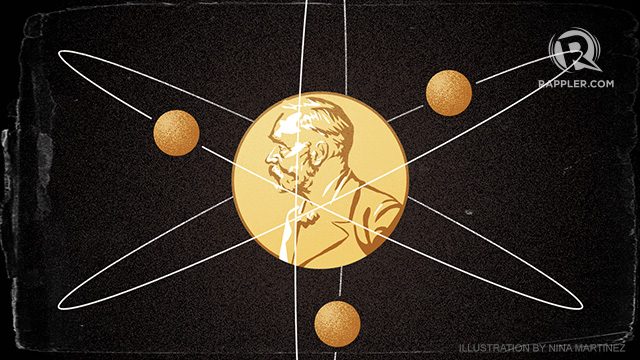SUMMARY
This is AI generated summarization, which may have errors. For context, always refer to the full article.

I marvel at the complexity of buildings – the basic unit of modern cities. Walking around where I spend most of my waking hours, I am “shrunken” by the many massive building construction projects going on. Having been part of a construction project a few years back, I have a good idea of the many layers of systems that need to be in synch in order to create a building and make it function. Remembering those days make my hair tangle on its own. But you have to multiply this complexity maybe at least a thousand fold in order to understand incredibly small things – the zone – that the winners of the Nobel Prize for science this year, probed. This week held the awarding ceremonies of the Nobel prizes for this year.
In building construction or even maintenance and repair, we have machinery that we haul in and out the site so that we could do what needs to be done – flatten a bump, raise sunken spots, scrape unwanted layers, pound and ground hardened surfaces. But what if what needs to be built and fixed are in areas that are smaller than the width of a human hair? You need molecular machines.
The Nobel Prize in Chemistry 2016 was awarded to Jean-Pierre Sauvage, Sir J. Fraser Stoddart and Bernard L. Feringa for their development of molecular machines that are not just as thin as a hair strand BUT a thousand times thinner!
Their stories, like the molecules they tried to create, are linked. Jean-Pierre Sauvage led research that first linked molecules in a chain – mechanically. This meant that it did not depend on the natural attraction of molecules to be linked together – but rather on the identified shapes of molecules and then physically interlocking them. This “first link” led to other interesting, more complicated molecular knots and shapes that science can create, and more importantly, it led to some of the parts of these shapes to move – molecular machines!
Sir J. Fraser Stoddart ramped up the molecular construction fleet to include an axle which meant you could send a molecular machine inside very small spaces, including our bodies, to move things sideways and eventually, up and down like a lift. Bernard Feringa eliminated the “unreliability” of the movement of these molecular robots by designing one that spins in one direction.
If you think that is weird, even weirder are the “flatlands” which the Nobel awardees in Physics intellectually hiked. These are surfaces that are so flat that they do not exist in the 3D world we are so used to navigating and measuring. Apparently, things get very interesting in this flatness and atoms behave very strangely compared to how they would be in the 3D world we are used to. And remember the thousandth thinness of molecular machines than a human hair? It is even so much smaller than that – that it almost disappears. “Almost disappearance” means they transform to states of matter that your regular textbooks in high school or even college do not even normally cover.
But to understand and measure this “almost disappearance”, ordinary calculations just won’t make sense. Instead, the principles of a mathematical field called “topology” would have to be wielded. This is what the winners of the Nobel Prize in Physics 2016 namely David J. Thouless, F. Duncan M. Haldane, and J. Michael Kosterlitz armed the field with. Understanding matter in these ‘ghostly’ states unleashes new takes on the development of innovative materials.
The 2016 Nobel Prize in Physiology or Medicine went to Yoshinori Ohsumi for discovering the genes that are essential to how the cell – you have at least 30 trillion of them in your body – receive, breakdown and dispose of the fats, carbohydrates and lipids it regularly receives. This is how your cells treat what you ingest. Any breakdown or malfunction in this process affects you at the very basic level that could lead to conditions, including cancer and neurological diseases.
One of the things that is not in your everyday “to-do list” is to directly command your cells to keep you alive. They do this on their own and they do this through a “degrade, die and renew” cycle that lasts as long as you breathe. In order to do this, the cells would have to, among other things, eat themselves. The scientific term for this is “autophagy.” It is sort of the biological equivalent of the religious slogan “to die unto oneself to live.” This is what the cell does to itself so that it can renew itself. Mr. Ohsumi detailed this process using yeast, finally identifying the genes behind this “self-eating”. And as it turned out, yeast had the same autophagy genes as humans.
I carry around a hand-held microscope in my bag. It always keeps things interesting, not just for me but for people I meet with whom I seem to be as lost as me, as to why we have been grouped together or talk to each other. The next time I use it, it will be against the backdrop of my awareness of an even miniature, infinitesimally smaller world which I could never scale but are inside me or would probably be coming to nano constructions sites near me.
Small is wonderful. – Rappler.com
Add a comment
How does this make you feel?
There are no comments yet. Add your comment to start the conversation.